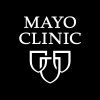Long-term Effects of Laser Refractive Surgery
Primary Purpose
Myopia
Status
Completed
Phase
Phase 4
Locations
United States
Study Type
Interventional
Intervention
Laser Refractive Surgery
Sponsored by

About this trial
This is an interventional treatment trial for Myopia
Eligibility Criteria
Myopia 1-10 diopters No other ocular abnormalities except presbyopia
Sites / Locations
- Mayo Clinic
Outcomes
Primary Outcome Measures
keratocyte density at 5 years
nerve density at 5 years
Secondary Outcome Measures
Full Information
NCT ID
NCT00350246
First Posted
July 7, 2006
Last Updated
January 27, 2010
Sponsor
Mayo Clinic
Collaborators
National Institutes of Health (NIH)
1. Study Identification
Unique Protocol Identification Number
NCT00350246
Brief Title
Long-term Effects of Laser Refractive Surgery
Official Title
Long-term Effects of Laser Refractive Surgery
Study Type
Interventional
2. Study Status
Record Verification Date
January 2010
Overall Recruitment Status
Completed
Study Start Date
July 2004 (undefined)
Primary Completion Date
January 2009 (Actual)
Study Completion Date
January 2009 (Actual)
3. Sponsor/Collaborators
Name of the Sponsor
Mayo Clinic
Collaborators
National Institutes of Health (NIH)
4. Oversight
5. Study Description
Brief Summary
This study will determine if there are short- and long-term postoperative differences in visual and corneal outcomes between different laser refractive surgical procedures.
Detailed Description
We will measure postoperative differences in visual acuity, contrast sensitivity, corneal light scatter, density of keratocytes and subbasal nerves, corneal sensitivity, corneal topography and wavefront between PRK performed with epithelial removal by a laser or by a rotary brush and between LASIK performed by using a microkeratome or by using a femtosecond laser. Measurements will be made at baseline and at intervals over 5 postoperative years in 21 LASIK patients, 20 PRK patients, and 20 unoperated controls.
6. Conditions and Keywords
Primary Disease or Condition Being Studied in the Trial, or the Focus of the Study
Myopia
7. Study Design
Primary Purpose
Treatment
Study Phase
Phase 4
Interventional Study Model
Parallel Assignment
Masking
None (Open Label)
Allocation
Randomized
Enrollment
62 (Actual)
8. Arms, Groups, and Interventions
Intervention Type
Procedure
Intervention Name(s)
Laser Refractive Surgery
Primary Outcome Measure Information:
Title
keratocyte density at 5 years
Title
nerve density at 5 years
10. Eligibility
Sex
All
Minimum Age & Unit of Time
18 Years
Maximum Age & Unit of Time
70 Years
Accepts Healthy Volunteers
Accepts Healthy Volunteers
Eligibility Criteria
Myopia 1-10 diopters No other ocular abnormalities except presbyopia
Overall Study Officials:
First Name & Middle Initial & Last Name & Degree
William M. Bourne, M.D.
Organizational Affiliation
Mayo Clinic
Official's Role
Principal Investigator
Facility Information:
Facility Name
Mayo Clinic
City
Rochester
State/Province
Minnesota
ZIP/Postal Code
55905
Country
United States
12. IPD Sharing Statement
Citations:
PubMed Identifier
21060042
Citation
Patel SV, McLaren JW, Kittleson KM, Bourne WM. Subbasal nerve density and corneal sensitivity after laser in situ keratomileusis: femtosecond laser vs mechanical microkeratome. Arch Ophthalmol. 2010 Nov;128(11):1413-9. doi: 10.1001/archophthalmol.2010.253.
Results Reference
derived
PubMed Identifier
20227675
Citation
Calvo R, McLaren JW, Hodge DO, Bourne WM, Patel SV. Corneal aberrations and visual acuity after laser in situ keratomileusis: femtosecond laser versus mechanical microkeratome. Am J Ophthalmol. 2010 May;149(5):785-93. doi: 10.1016/j.ajo.2009.12.023. Epub 2010 Mar 15.
Results Reference
derived
Learn more about this trial

Long-term Effects of Laser Refractive Surgery
We'll reach out to this number within 24 hrs